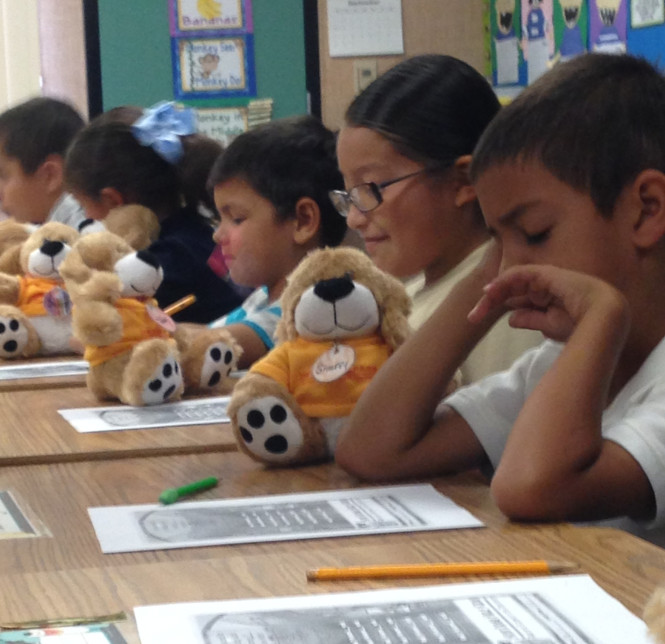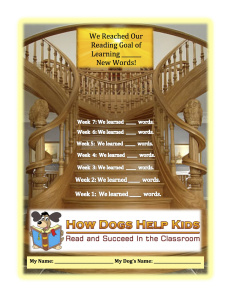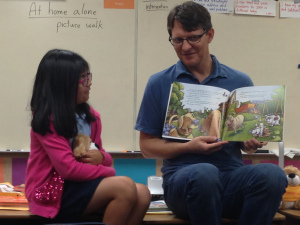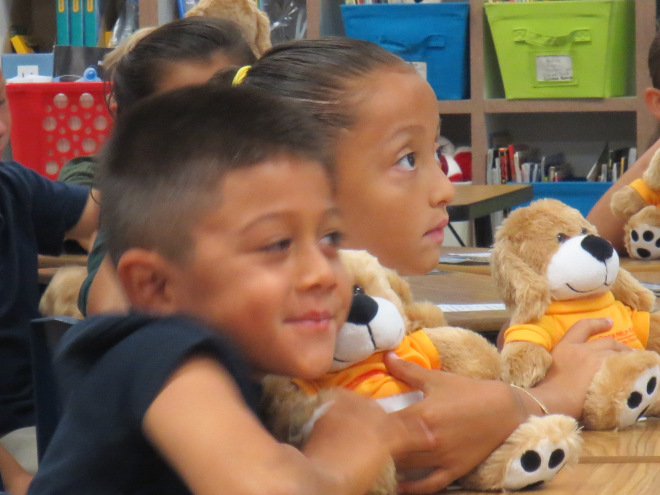Goal Setting and Comprehension Strategies when Reading with Pets!
 The Importance of Goal Setting
The Importance of Goal Setting
In addition to teaching children fun and effective reading skills to help them become more confident, stronger readers, students who participate in How Dogs Help Kids Read and Succeed In the Classroom also learn important skills for success not only in learning, but in life. I (Dr. Lori) was trained by Jack Canfield, #1 New York Times Bestselling Author of the Chicken Soup for the Soul series and The Success Principles. As part of this life-changing, year-long training, I recognized the necessity of bringing these principles into children's lives in an age-appropriate way, thereby giving young students the tools they need and a roadmap for success as early as possible. 
Therefore, as part of this program, the children are asked to "think big" and to deeply consider what their reading goal is by the end of the program. Asking children to set a goal and then take one small step every single day towards reaching their goal helps students learn to break down a big dream into bite-sized pieces that can feel much more manageable. Just like looking up a large staircase and wondering how they are ever going to make it to the top, the children are reminded to record how many new words they have learned each week as a way of tracking their own progress on their way to reaching a much larger goal. They learn that each effort, each day, brings them one step closer to meeting their goal, no matter how big it may seem at the beginning!
Reading Comprehension with Stuffed Animal Buddies and Pets of All Kinds!
If you have a dog or another pet at home, you can involve him or her in reading activities with your child in fun and creative ways to help improve your child's comprehension, or understanding of what they are reading. One way you can do this is by teaching your child to do a "picture walk" with your pet. Begin by explaining to your child that reading is very, very difficult for animals. In contrast, children are so smart, and they are so good at this that sometimes they need to spend some extra time to help their pets to understand the story.
 Before you begin reading with your child, place sticky notes every three pages or so in the book to serve as a "marker" to pause and do a picture walk with your child. As your child reads aloud to your dog or stuffed animal, each time you come to a sticky note say to your child, "Do you think you can re-tell or review for (your pet's name) what has happened in the story so far, using your own words?" Positioning the book so the pet can "see" the pictures, speaking slowly and clearly, and being gentle and loving are all latent lessons you can teach to help build empathy and compassion in your child. What a fun way to help children to not only become stronger readers, but to learn the value and skill in being patient and kind teachers to others - the best way to learn!
Before you begin reading with your child, place sticky notes every three pages or so in the book to serve as a "marker" to pause and do a picture walk with your child. As your child reads aloud to your dog or stuffed animal, each time you come to a sticky note say to your child, "Do you think you can re-tell or review for (your pet's name) what has happened in the story so far, using your own words?" Positioning the book so the pet can "see" the pictures, speaking slowly and clearly, and being gentle and loving are all latent lessons you can teach to help build empathy and compassion in your child. What a fun way to help children to not only become stronger readers, but to learn the value and skill in being patient and kind teachers to others - the best way to learn!


